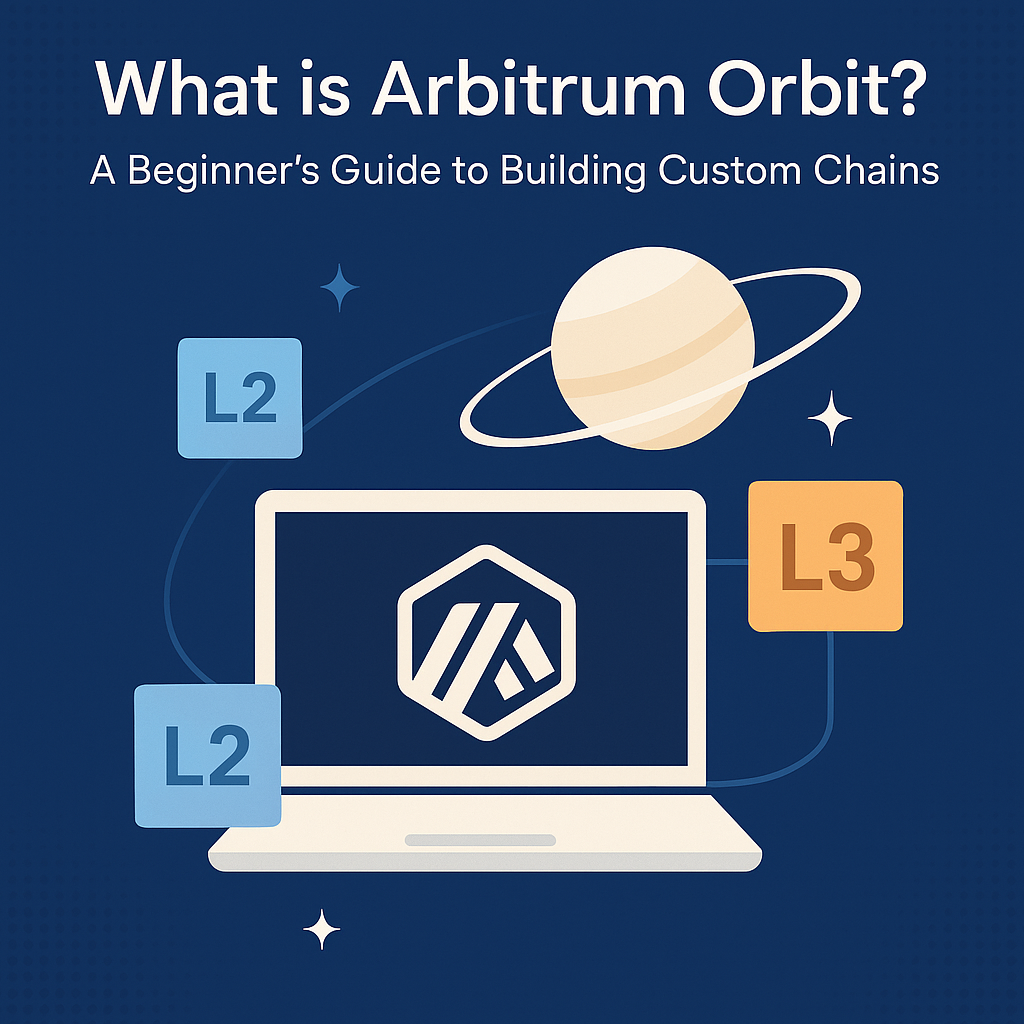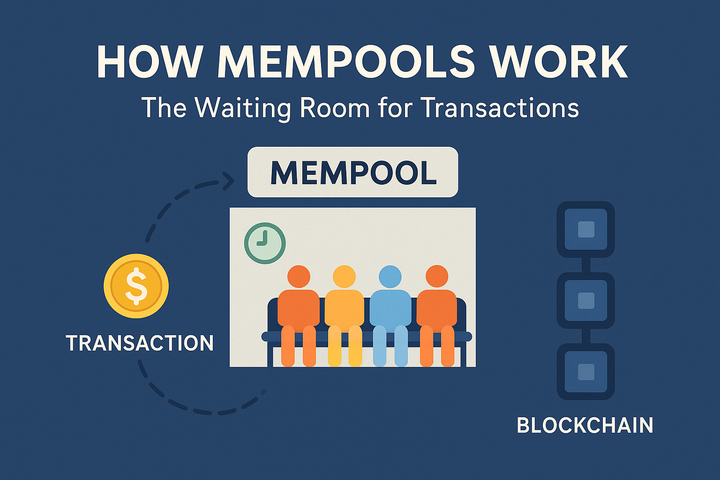What is Arbitrum Orbit? A Beginner's Guide to Building Custom Chains

Introduction
In the ever-evolving world of blockchain, scalability and sovereignty have become key priorities for developers. Arbitrum Orbit offers a powerful solution to both. Whether you're building a DeFi app, a gaming project, or a modular chain ecosystem, Orbit lets you launch your own custom blockchain using Arbitrum’s battle-tested technology stack.
Let’s break down what Arbitrum Orbit is, how it works, and why it matters.
🌉 What is Arbitrum Orbit?
Arbitrum Orbit is a framework that allows developers to build their own Layer 3 (or Layer 2) blockchains, also known as Orbit chains, on top of the Arbitrum network.
It’s like creating your own blockchain universe, customizable, scalable, and secured by the Ethereum network through Arbitrum's infrastructure.
These Orbit chains inherit the core benefits of Arbitrum technology:
- Low fees
- Fast finality
- Ethereum-grade security
- EVM compatibility (if desired)
Orbit can also enable innovative liquidity routing protocols like Mitosis's omnichain liquidity system to function more efficiently across app-specific chains.
🧱 Orbit Chain Architecture: L2s vs L3s
Orbit chains can exist at two levels:
| Chain Type | Description | Example Use Case |
|---|---|---|
| L2 Orbit Chain | A Layer 2 chain settled directly on Ethereum, but built with Arbitrum’s tech | High-value apps requiring maximum security |
| L3 Orbit Chain | A Layer 3 chain built on top of an existing Arbitrum One or Nova chain | Gaming, SocialFi, high-frequency trading apps |
L3s offer even lower costs and higher customization, while still enjoying trust-minimized security from Ethereum. This architecture is ideal for powering systems like Mitosis’s yield and liquidity vaults that require cross-chain coordination.
🔧 Customization: Your Chain, Your Rules
With Arbitrum Orbit, you can configure:
- Execution environment: Choose Nitro (Arbitrum’s core tech), or something else.
- Permissioning: Create public or private chains, with whitelisted participants.
- Tokenomics: Set your own native token, gas fee logic, and incentives.
- Governance: Integrate DAO systems or keep things centralized at launch.
You also get the option to build using Arbitrum Stylus (WASM support), opening the door for developers who prefer Rust, C, or C++ instead of Solidity.
Orbit’s flexibility supports experiments with new forms of modular appchain design, helping projects tailor execution layers for niche use cases.
🔐 Security: Trust-Minimized and Ethereum-Rooted
Even though Orbit chains are independent, they benefit from Ethereum’s security thanks to:
- Rollup technology: All chains built with Arbitrum inherit rollup-level trust assumptions.
- Fraud proofs and verifiers: Depending on the stack, chains can implement fraud proofs for added trust.
- Permissioning layers: Orbit supports validator whitelists or open participation based on your design.
Combined with Mitosis’s Cross-Layer Messaging system, Orbit chains can remain interconnected while preserving trust assumptions.
💡 Benefits of Building on Arbitrum Orbit
| Benefit | Explanation |
|---|---|
| Scalability | Handle massive user traffic without clogging Ethereum or Arbitrum L2 |
| Custom Economics | Full control over gas, tokens, and rewards |
| Lower Costs | L3s reduce transaction costs even further |
| Interoperability | Easy interaction with other Arbitrum-based apps and chains |
| Dev Ecosystem | Access to Arbitrum’s growing tools, grants, and community support |
Orbit provides the perfect layer for integrating scalable primitives like Mitosis Liquidity Routing, bridging multiple layers seamlessly.
🧪 Real-World Examples
- Xai: A gaming-focused L3 Orbit chain built on Arbitrum, optimized for game economies and fast transactions.
- Aevo: Built its own execution layer using Arbitrum Orbit for high-performance options trading.
These projects benefit from Orbit’s customizability while remaining anchored to Ethereum’s security guarantees.
📦 How to Get Started
To deploy an Orbit chain, you'll typically:
- Choose the stack (Nitro, Stylus, or custom).
- Configure your chain’s parameters.
- Spin up the infrastructure (Sequencer, Validator, RPC).
- Launch your apps on it.
- Optionally integrate with Arbitrum Orbit Dev Tools or the Arbitrum Foundation.
Developers can start from Arbitrum’s Orbit documentation.
Final Thoughts
Arbitrum Orbit is more than just another Layer 3 solution, it’s a portal to sovereign, modular, and hyper-scalable blockchain development. Whether you're building a niche DeFi protocol or an entire chain for your ecosystem, Orbit provides the flexibility and efficiency to make it happen.
As the demand for app-chains rises, Arbitrum Orbit is positioned to lead the next wave of custom blockchain deployments and with Mitosis as the omnichain liquidity layer, these ecosystems are now more interconnected than ever.



Comments ()